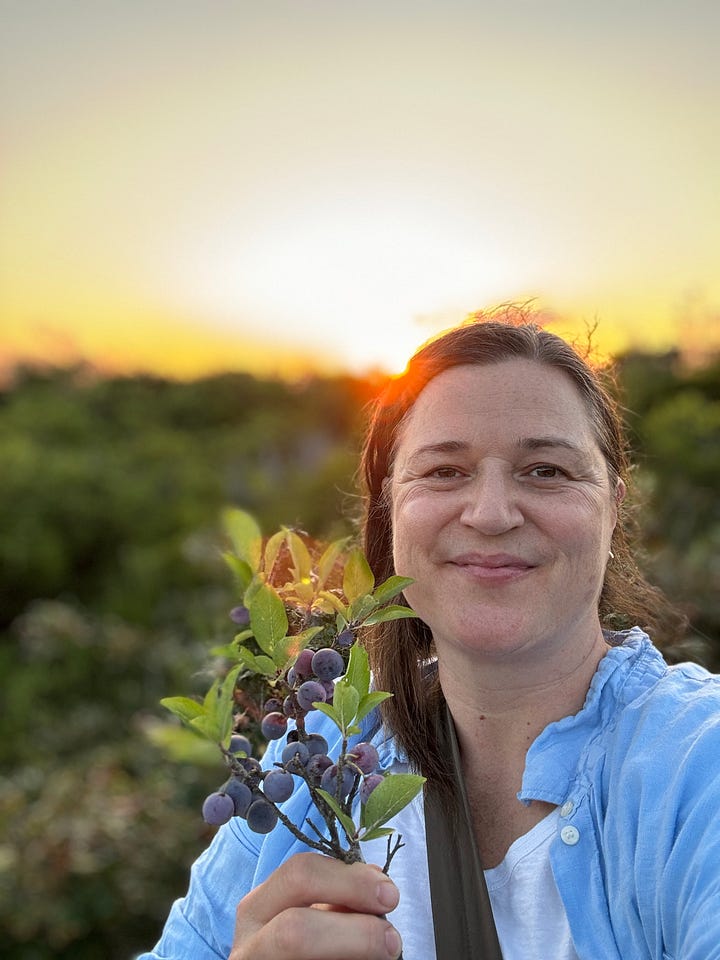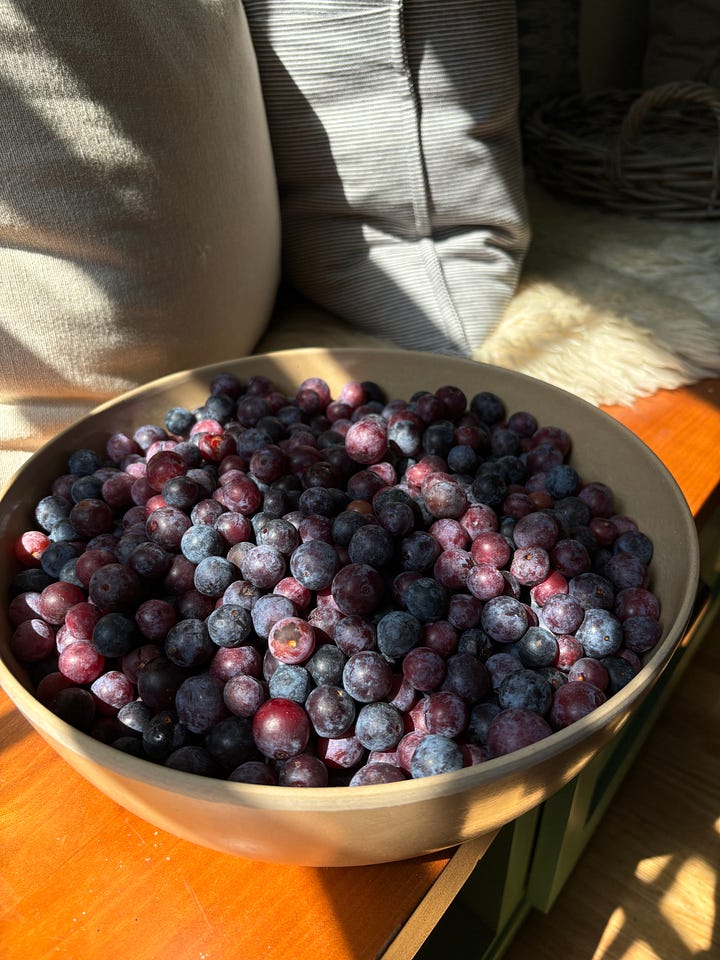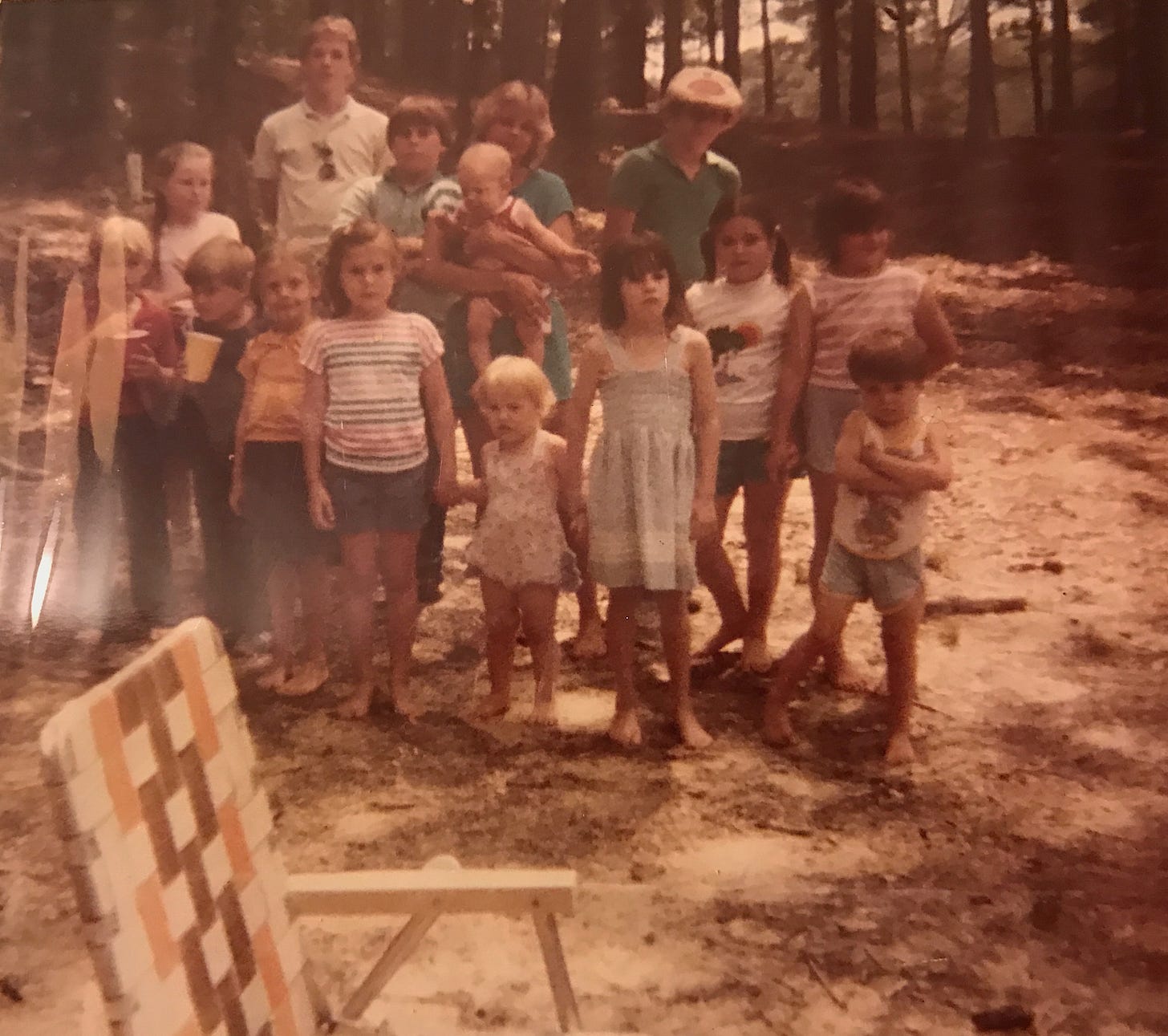In Praise of Wildness, Beach Plums, & Summer's Last Dregs
3 Recipes for easy vinegar, dry jam & jelly
I have so much to tell you about, but have had no time to do it! Why am I so busy you ask? Well, summer has been steady proving her abundance. Throwing never-ending harvests across my kitchen island that I am obliged to preserve lest they go to waste. From my own little postage stamp of an urban garden, there have been tomatoes, peppers, beans, squash, cucumbers, and SO MANY FIGS. But I also keep a summer bucket list of my favorite summer harvests that I do my best to seek out around the region. And there are none more exciting than September beach plum harvesting!


Exploring the rural landscapes of South Jersey and SE Pennsylvania in search of seasonal abundance helps me make this place a home. It’s how I ground myself in time and place and fall in love with the little things that make it unique. When I was a little girl I used to ride around on endless winding dirt roads in the county with my daddy and not only did he always know where each road led, but he knew who owned all the fields and gardens and who lived in all the houses. He’d even bricked a fair number of them. I always think of him when I’m trying to find that deep connection and intimacy in my new homeplace. I want to know all the secrets and histories this place holds, and most of all I want to find any little scraps of wildness that remain.
Wild Times at the Jersey Shore
My husband’s family has had a beach house down at the Jersey Shore since the 80s. I feel incredibly lucky to have access to a house that lets us take full advantage of the summers at the Shore. That said, I have never been any place where the struggle between man and nature is so blatantly obvious. Their house is located on The Point, just up from the long jetty juts out into Great Egg Harbor Inlet, right where the Atlantic Ocean meets the bay. The Army Corp of Engineers put in a huge wall a few years ago to slow the ocean and the increasing storms from reclaiming the houses there. You’d be hard pressed to find a more precarious site to build a house. These houses should not exist in the natural order of things.
While visually neat, the perfection of the lawnscapes on the southern end of Absecon island feel rigid, with little room for the unexpected. Out walking my dog, a single weed grabs my attention, as a hair out of place in a hyper-manicured landscape of sod yards and shrubs that look like they were plopped in the ground yesterday by one of those HGTV makeover shows. The crisp edging and flowers perpetually in peak bloom are achieved through tremendous effort and manipulation, the whole thing an undeniable human “flex” in a hostile windy and saline natural environment.
This is why I regarded it as a complete miracle when I discovered that there were wild plums thriving on the beaches a mere 35 miles from here.
In stark contrast the native beach plum thrives in the poor, sandy soils and persistant winds of the Atlantic coastline. They have deep, extensive roots and grow low to the ground, bending under the breeze, reflecting their resilience and adaptability. They are not planted purely for human aesthetic pleasure, though they provide plenty, but grow instead for the thriving of an entire ecosystem, including many life forms from insects to birds to humans, as well as the stabilization of the beach itself, the very sand dunes on which they grow.
It should not be surprising then that beach plums were one of the earliest plants recorded to have been seen when the colonist arrived on the shores of the Atlantic in the 1600s. Henry Hudson documented seeing an abundance of blue plums growing along what we now call the Hudson River in 1609.
I am in danger here of furthering the fantasy that the beach plums the colonists found growing “wild” were spontaneous and “pure,” unsullied by human manipulation, but we know that this was not true. Colonists tended to think that wild foods were provided by God and that was evidence of his approval of their actions (see the "Doctrine of Discovery" that was used to justify snuffing out Indigenous people and their culture).
Colonists wrote of wild strawberry fields that God had provided, but in reality this was an early form of invisible labor. Colonists were blind to fact that indigenous women were responsible for the abundance by selectively tending patches to propagate and proliferate these wild foods. The colonist lens didn’t recognize farming when it wasn’t lined up in rows and a good candidate to be marketed and sold for profit.
But what indigenous people, and women in particular, possessed was a deep respect for the earth’s rhythms and an awareness of our interconnectedness to plants, animals, and the earth.
The delight of finding the beach plums is because, as the colonists did recognize, they do feel like a gift. Our gratitude, however, should not be simply to God, but to the women and indigenous cultures who cultivated this abundance and to the plant itself, which we can pay respects by further tending to it or protecting it. Robin Wall Kimmerer writes beautifully about this sort of reciprocity in regarding the Serviceberry.
Gratitude and reciprocity are the currency of a gift economy, and they have the remarkable property of multiplying with every exchange, their energy concentrating as they pass from hand to hand, a truly renewable resource. I accept the gift from the bush and then spread that gift with a dish of berries to my neighbor, who makes a pie to share with his friend, who feels so wealthy in food and friendship that he volunteers at the food pantry. You know how it goes.
To name the world as gift is to feel one’s membership in the web of reciprocity. It makes you happy—and it makes you accountable.
So maybe it’s not just wildness that I crave, but harmony with the world around me. To be whole and connected, accountable and contributing to the the web of life instead of at war with it. The rootedness and connection to place that my father always had also came with great responsibility and obligation.
Plum Country
Tiny beach plums also remind me of the boxes of plums my great aunt and uncle used to bring to my grandmother’s family reunions in South Mississippi. Like beach plums, the wild plums of my youth grew in sandy soils, poor soils, any soils, really and had long been an important food for indigenous populations.

One such perfect day is etched in my memory. Me in pigtails and a muscle shirt with all my extended cousins rummaging through the cardboard box to find the reddest plum. Then biting into it’s tart, tannic flesh. We’d pass around the salt shaker to sprinkle it over our fresh bite to balance the sour before taking another. The sticky sweet juice ran all the way down to my bare round belly. I sucked the last of the sweet tart goodness off the pit and spit it as far as a could before running full speed back off the end of the dock to wash off in the warm lake.
Our aunts and grandmothers would gather the wild plums and make all of the very best jelly we could eat on a year’s worth of biscuits and still have a box full to feed to the kids.
These plums are also known as Chickasaw or Choctaw plums because they were an important food of local indigenous populations where they were dried and used to create pemmican, a vital high-calorie food made of fat, meat, and dried fruit for winter survival.
Commercial plums like Santa Rosas or Italian prune plums are model fruits - their meaty and succulent fruit comes easily off the pit, making them a breeze to process for baking or jam. They offer a balance of sweet and tart that have wide appeal for eating out of hand.
Beach plums and Cherokee plums aren’t like that at all. You can pop one whole in your mouth and suck it off the pit or be prepared for a fair amount of processing to free the flesh from the pits. While they are highly prized for the nuanced jams and jellies they make, it’s mostly feral youth like my cousins and me, plus other wildlife, who relish eating them raw.
Every Last Drop of Summer
We mostly think of summer ending Labor Day weekend and for weeks now pumpkin spice everything has been shoved down our throats. However, September is a shoulder season, containing my favorite flavors of summer, and I refuse to skip over it and head straight for pumpkins and apples. Someone told me a few years ago that September at the Jersey Shore, and Cape May in particular, is for locals. The water is still warm (for the mid-Atlantic), the weather is perfect (unless there’s a hurricane!), and I would add, there’s loads of beach plums. Added bonus if you aren’t a local, beach rentals are finally affordable.
RECIPES
Keep reading with a 7-day free trial
Subscribe to Preserving the South to keep reading this post and get 7 days of free access to the full post archives.




